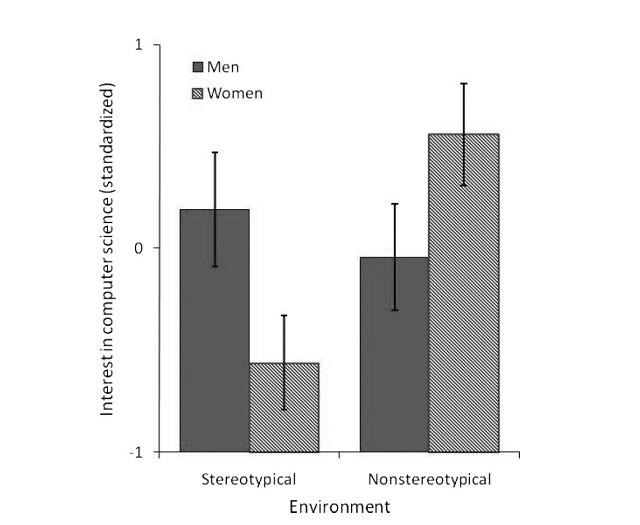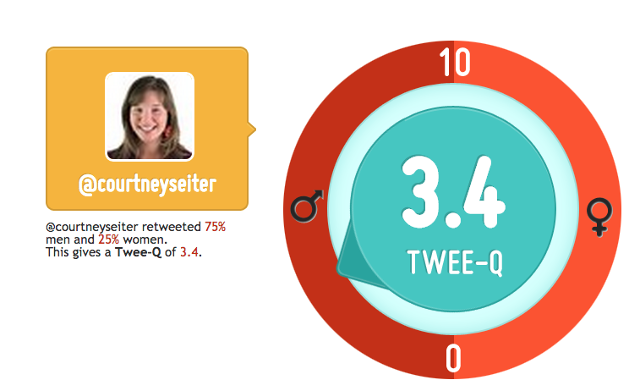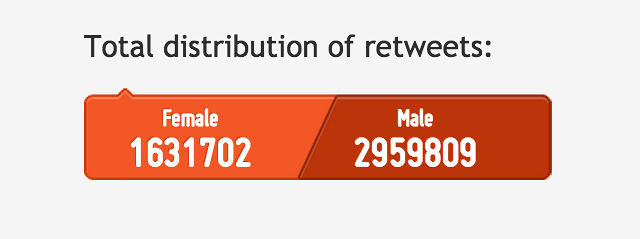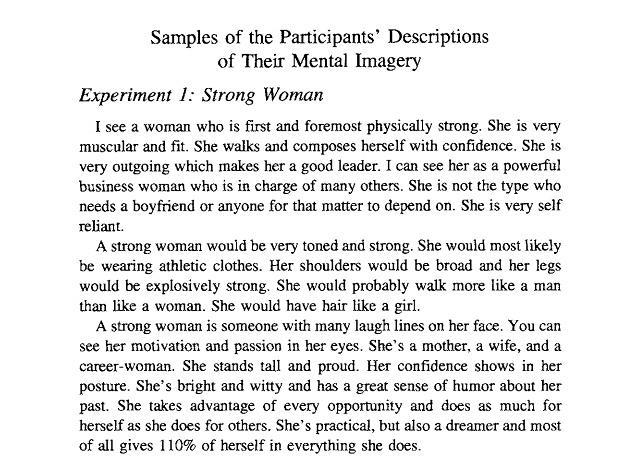7 easy struggle towards Your Unconscious Biases
What you assume you believe and what your unconscious associations reveal about your beliefs are regularly very completely different.
April 8, 2015
I consider in the power of women to build inspiring careers in all varieties of fields.
at the least, that’s what I thought I believed. It’s what my conscious mind thinks, at the least.
My unconscious mind, however, favors conventional Western gender roles: males specializing in careers while ladies focal point on domestic.
I discovered about this dichotomy from taking an implicit affiliation test, a social psychology test designed to measure a person’s unconscious or automatic associations between forms of individuals and explicit ideas or concepts.
and i’m now not by myself: the results of more than one million exams recommend that most of the people have these unconscious associations.

So i believed i’d search for just a few ways I may begin to right my implicit biases and bring my unconscious mind on board with what the remainder of me believes.
The e book Blindspot: The Hidden Biases of fine folks (the authors are the inventors of the implicit affiliation take a look at) has a ton of interesting science on this topic. One bit in particular stood out to me:
Eric Kandel, a neuroscientist at Columbia college who got a Nobel Prize for his work on memory, used to be once pressed to assert how so much of the thoughts works unconsciously; he gave an estimate of 80 to ninety%.
the real number isn’t necessary and even that you can imagine to derive. the purpose is that experts agree that the ability to have conscious get entry to to our minds is quite low.
So it’s especially important to center of attention on inclusivity in our aware minds, as a result of our unconscious has already put most of us (me incorporated!) in slightly a deficit.
although this list is not at all exhaustive, here are a few things I found out that may help us to counteract our personal unconscious and get closer to the individuals we actually wish to be.
1. Use Inclusive Language
One factor we’ve been engaged on lately in Buffer’s digital place of business, where most communique is written, is to be mindful of the language we use and make sure it’s as inclusive as possible.
for instance, many of us had been cracking down on our use of the colloquial “hey guys” greeting as we address the staff. It was, in fact, never supposed to exclude the women on the crew and has always been intended as a basic greeting.
however we price readability in verbal exchange at Buffer, and this greeting, pleasant although its intentions might be, can be easily misconstrued.
Pinterest engineer Tracy Chou rightly gave us a little nudge on this just lately, and we really savor it:
It’s a great reminder to maintain happening this development, and being privy to all our language selections. Plus we now and again get to reference this superior flowchart from Tech LadyMafia.

2. Expose your self To Counterstereotyping Imagery (as simple as a Screensaver)
Even the creators of the implicit association assessments nonetheless “fail” them.
Blindspot co-writer Mahzarin Banaji got here up a easy and distinctive approach to fight a few of her own “mindbugs:”
She created a screensaver for her pc that displays pictures of a diverse array of humanity. She assumes that these photography may just do little more than preserve her alerted to the actual vary of variety in the world, as opposed to that of the more restricted set of humans she encounters in her day by day expertise. She also liked photography that represent counterstereotypes. short bald males who’re senior executives is one of her favorite counterstereotyping photography. some other is a drawing from a new Yorker magazine duvet, of a development worker with onerous hat on, breast-feeding her child.
3. imagine Your office fixtures
when you’ve got a bodily administrative center that you need to make more inclusive for each genders, this study may well be of pastime.
at the university of Washington, Sapna Cheryan demonstrated that adding more feminine decor to computer science lecture rooms bolstered ladies’s associations of female gender with the opportunity of laptop science careers.

by changing out the objects in a pc science study room from issues like a celebrity Trek poster and video video games to objects no longer thought to be stereotypical of laptop science like a nature poster, the scan boosted female find out about participant’s interest in pc science to the level of their male friends.
The learn about concluded:
Environments can act like gatekeepers by means of combating people who don’t feel they match into those environments from ever taking into account membership in the related teams.
4. Empower Mentors For Underrepresented groups
The researcher Buju Dasgupta has loads of interesting studies happening about implicit prejudice and stereotypes. One I actually like is the Stereotype Inoculation version.
that is her concept that successful individuals to your staff who look like you, like teachers and peers, can perform as a “social vaccine” that inoculates you from some of the self-doubt or alienation you may otherwise face in the sort of state of affairs.

up to now she has found a strengthening of “female = leader” and “female = math” associations in ladies college students after they acquired sustained exposure via their faculty courses to ladies school members.
results from several lab and container research published that publicity to female STEM professors and specialists more advantageous women’s certain implicit attitudes towards STEM, increased their identification with STEM, their confidence in STEM, and energy on assessments and exams.
this might means that having even a number of seen individuals of underrepresented teams on your staff will have a compounding effect, if your organization can encourage and make stronger mentoring relationships.
5. Use Social Media To amplify New Voices
were you aware, in its analytics part, Twitter will inform you the gender break up of your followers?
I used to be a little bit stunned to find my followers are majority male (though there is a little bit of uncertainty about how Twitter figures out those genders).

I was once even more shocked by way of my results from Twee-Q, a device that analyzes the gender of the voices you make bigger via retweets. i’ve a lot of work to do in amplifying smart female voices!

Of the 107,966 Twitter debts which were input into Twee-Q, there’s a massive tendency to increase males extra steadily than ladies:

After discovering that he followed an almost equal ratio of ladies and men, but retweeted males 3 times as incessantly as girls, the blogger and entrepreneur Anil dash tried an experiment.
For a yr he tried to expand different sorts of voices than he normally would through retweeting girls exclusively. He ended up taking part in the scan and recommending it to others:
should you’re inclined, are attempting being mindful of whose voices you share, expand, validate and promote to others… we spend so very so much of our time on these social networks, and there’s so much we can do to proper the wrongs we’ve seen in different media, thru easy, small actions. This one’s been a delightful and enjoyable position to begin.
6. to find individuals Of Underrepresented groups that you Admire
this is a really fun and simple one. What if you need to struggle your mind’s unconscious bias simply by admiring others?
any other find out about from the very busy Dr. Buju Dasgupta found that once people are uncovered to admired participants of disadvantaged groups (African americans, gays and lesbians, aged, girls), they specific less implicit bias against these groups.
in this learn about of racial implicit bias, participants printed much less bias after being shown “black examplars”—pictures of well-known and admired individuals like Martin Luther King Jr., Colin Powell, Michael Jordan and Denzel Washington.

this means one simple solution to work on unconscious bias might be to easily are seeking for out more admired members of underrepresented groups and center of attention on these folks’s work more ceaselessly.
7. Use Your imagination: Counterprogram Your brain
possibly the most straightforward manner of all to retrain your unconscious mind? Use your imagination.
at the college of Colorado, researcher Irene Blair discovered that simple imagination exercises were enough to weaken some implicit stereotypes.
She asked a blended-gender crew of faculty students to “take a couple of minutes to think about what a strong lady is like, why she is thought to be strong, what she is in a position to doing, and what sorts of spare time activities and actions she enjoys.”
The individuals came up with all form of images, from bosses to athletes:

no matter what their picture was once, participants who engaged in the mental imagery train produced “substantially weaker implicit stereotypes” when put next with contributors who engaged in impartial mental imagery or no psychological power.
So if you occur to be challenged by using a selected implicit bias, revealed either through taking a take a look at or your own intuition, which you can try counterprogramming your brain with some simple visible exercises like this one.
Being empathetic and inclusive to these of all walks of life is a skill it seems that most of us may work on for a lifetime.
I’m taking a look forward to putting these methods into observe to peer if i will be able to move my unconscious mind in the precise direction.
this article at the start regarded on Buffer and is reprinted with permission.
(168)














